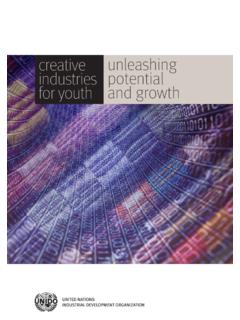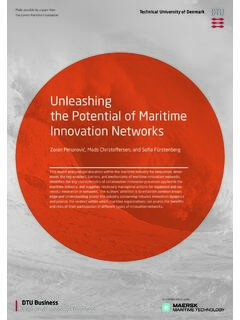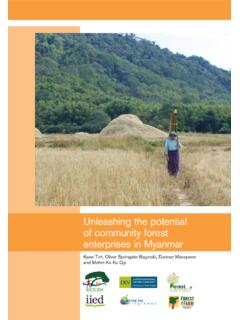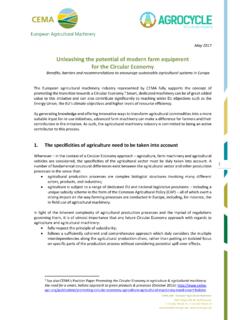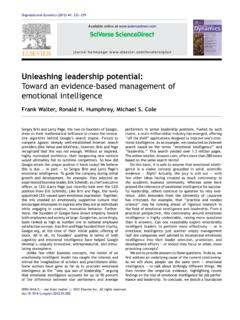Transcription of Unleashing the potential— and power—of FP&A
1 CFO InsightsF ebr uar y 2017 Unleashing the potential and power of FP&A Capacity: Obtaining the appropriate time and resources to focus on high-impact activities beyond foundational planning, budgeting, and forecasting. Capability: Retaining employees with the right skill sets and experience to support the organization on its critical business issues. Collaboration: Cultivating access to, and relationships with, business CFOs make structural changes to their finance departments weaving together a mix of shared service centers, centers of excellence, and outsourcing arrangements they create new opportunities for the remaining or retained finance function to add more value.
2 Case in point: The financial planning and analysis (FP&A) function, which may be particularly poised to play a more strategic role across the leverage its power , CFOs need a long-term, multifaceted plan that will result in FP&A delivering a wide range of data-driven insights that support everything from operational decision-making to organizational strategy. Start by having a current-state conversation with the head of FP&A (see sidebar, What to ask your FP&A leader ). Then, armed with that information, CFOs should consider implementing a Three C s framework: capacity, capability, and collaboration, which entails: CFO Insights Unleashing the potential and power of FP&AIn this issue of CFO Insights, we will explore the Three C s, and discuss how, when leveraged properly, they can propel FP&A to a higher.
3 Focus on performance predictability and impactThe initial step, creating the capacity that can enable FP&A to devote more resources to business partnering, typically happens in two phases. The first is to focus on performance predictability, which is the ability to predict the future from a finance perspective, both in terms of short-term and long-term forecasting. Organizations can take several actions to improve performance predictability that, in the aggregate, can free up capacity by 30% to 35%.1 These actions involve mastering the basics of planning, budgeting, and forecasting, including: Governance and communication: Establish clear guidance from executive leadership on assumptions, targets, and timelines that FP&A staff within the retained finance organization and embedded throughout the business units can follow.
4 Standard and repeatable calendar: Lock down an annual FP&A calendar that is not prone to override by last-minute requests. Standardized processes: Enforce consistent methods for budget creation (rolling forecasts, trending, etc.) across business units that prompt finance staff to plan a similar level of detail and use a common framework. Systems: Use technology to leverage existing data sources and baselines to help reduce the manual work of extracting, manipulating, and reconciling actual data from source systems.
5 Operating model: Leverage centers of excellence to move transactional work above market, relieving local and retained FP&A staff from routine back-office work. Executive review cycles: Minimize the number of review cycles required to create the financial plan to reduce unnecessary churn for FP&A staff. One viable approach may be a soft review 2cycle of draft budgets and then a final review before finalizing the plan. Management reporting: Leverage self-service reporting tools or shared service teams to create standard management reporting packages, then use FP&A teams to add insights.
6 Disruptive technologies: Use robotic process automation to help reduce time spent on manual and repetitive tasks, allowing staff to focus on value- adding second phase performance impact involves expanding FP&A's footprint, and varies from company to company based on the underlying metrics by which the organization operates. In a common scenario, FP&A s analytics experience becomes embedded into functions including sales, operations, manufacturing, R&D, and a range of support areas such as IT, HR, legal, and finance itself.
7 The contributions FP&A makes in these areas will quickly reinforce its value to the company. In sales and marketing, for example, FP&A can help identify growth opportunities by assessing macroeconomic trends, producing product-level forecasts, and estimating the return on investment (ROI) of marketing spend. In core manufacturing, FP&A can help boost margins by increasing throughput while reducing production costs through procurement improvements and supply chain optimization. In R&D, where long cycle times are common, FP&A can track the effectiveness of investments and use business cases and statistics to direct funding into targeted R&D programs.
8 Increasingly, those efforts are being augmented by new, disruptive technologies in the fields of data visualization and natural language report creation, among others, which enable FP&A teams to not only mine data for insights, but present the results in more intuitive and accessible formats. Historically, FP&A has focused on having good planning and reporting tools, augmented by spreadsheets and presentation tools. Now with the technological possibilities expanding, FP&A organizations should be encouraged to understand the capabilities of these new : Creating the FP&A team you need nowAs you invest more time and resources into FP&A capacity, your focus should move toward evaluating the capabilities of individual team members: Do they have the skills and experiences needed to help the business address strategic issues?
9 To build collective capability, the FP&A function should attract and retain team members with differentiated skill sets and provide them with continuous development opportunities. Emphasizing that the function is keen to address not only its traditional core competencies (planning, forecasting, budgeting, management reporting, etc.), but also enhanced strategic decision support, analytical insights, and overall organizational leadership can help elevate FP&A as an attractive career destination. CFOs and FP&A leaders can foster this talent imperative by addressing a number of technical, professional, and leadership competencies that next-generation FP&A demands, including:Exposure: Provide sponsorship, coaching, and continuous learning opportunities, and encourage FP&A staff to make formal and informal connections across the organization.
10 Experience: Create opportunities for FP&A professionals to see how these new capabilities change their roles. As an example, supporting a business unit s committed spend analysis is one way to showcase how these new capabilities are deployed. It provides technical experience within the construct of a business problem while also offering an opportunity for key talent to communicate with stakeholders two to three levels above : Create competency-based training that supports the development of specific skills, and also provide coaching/mentoring to educate staff on leadership practices.












